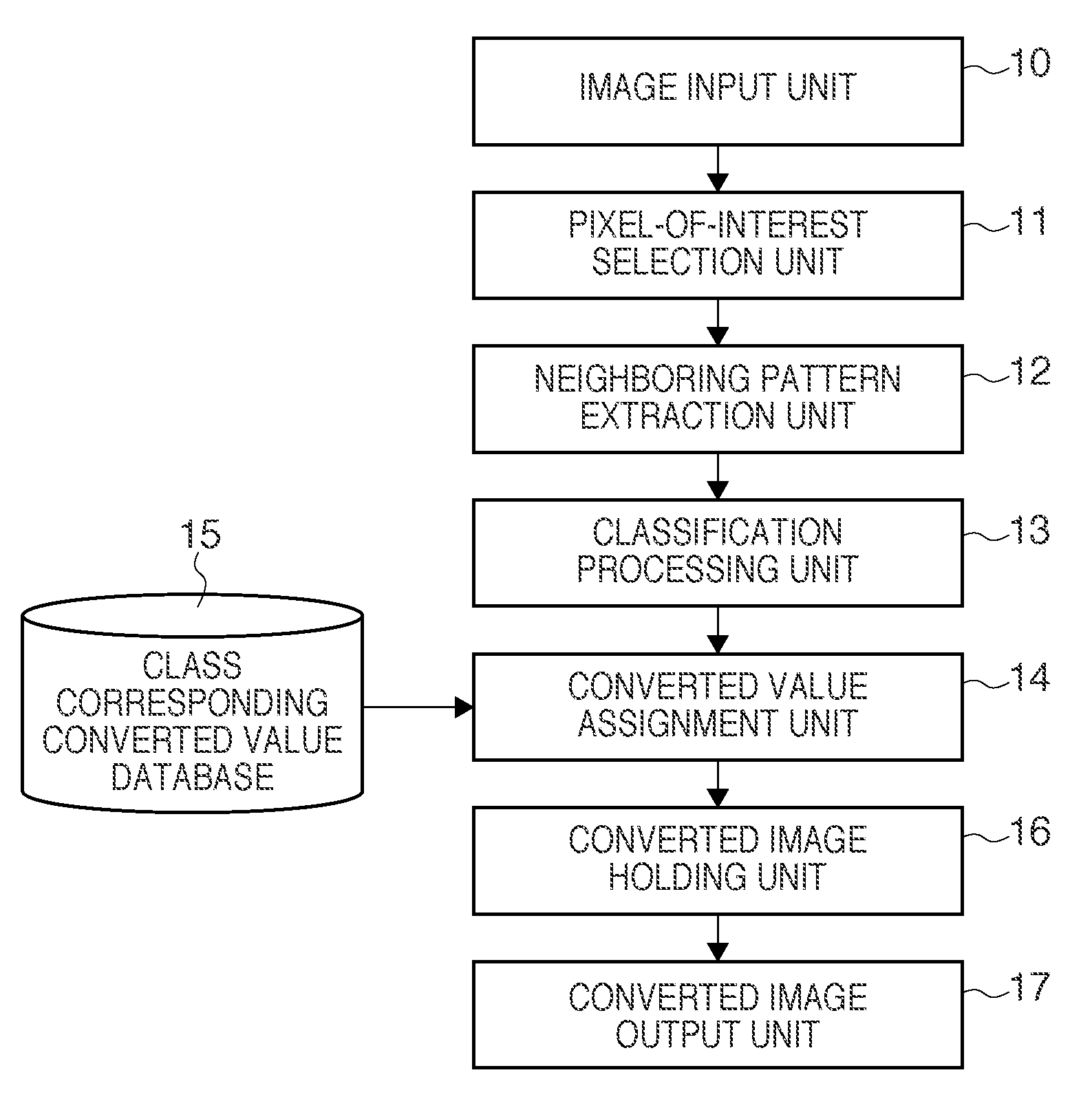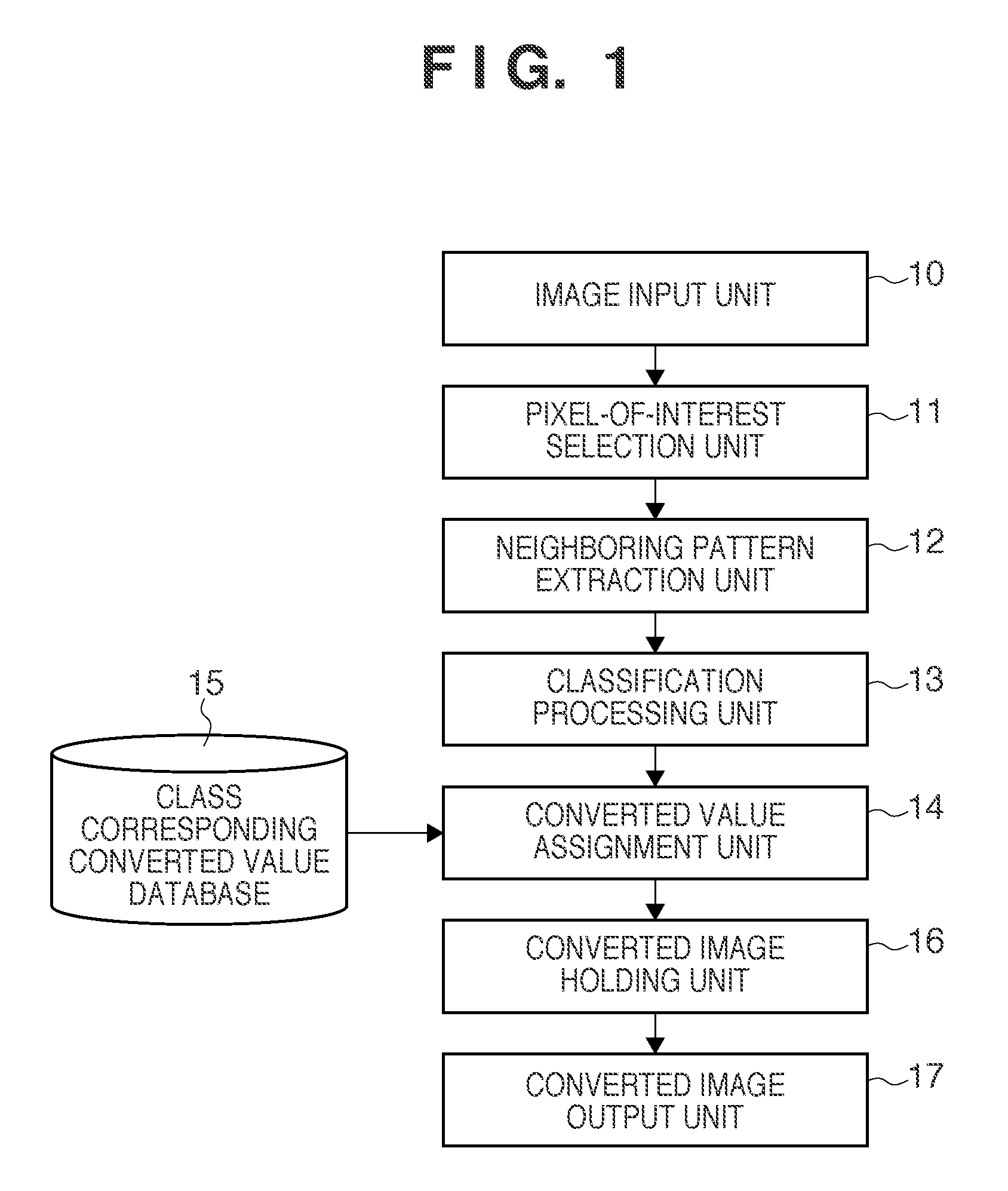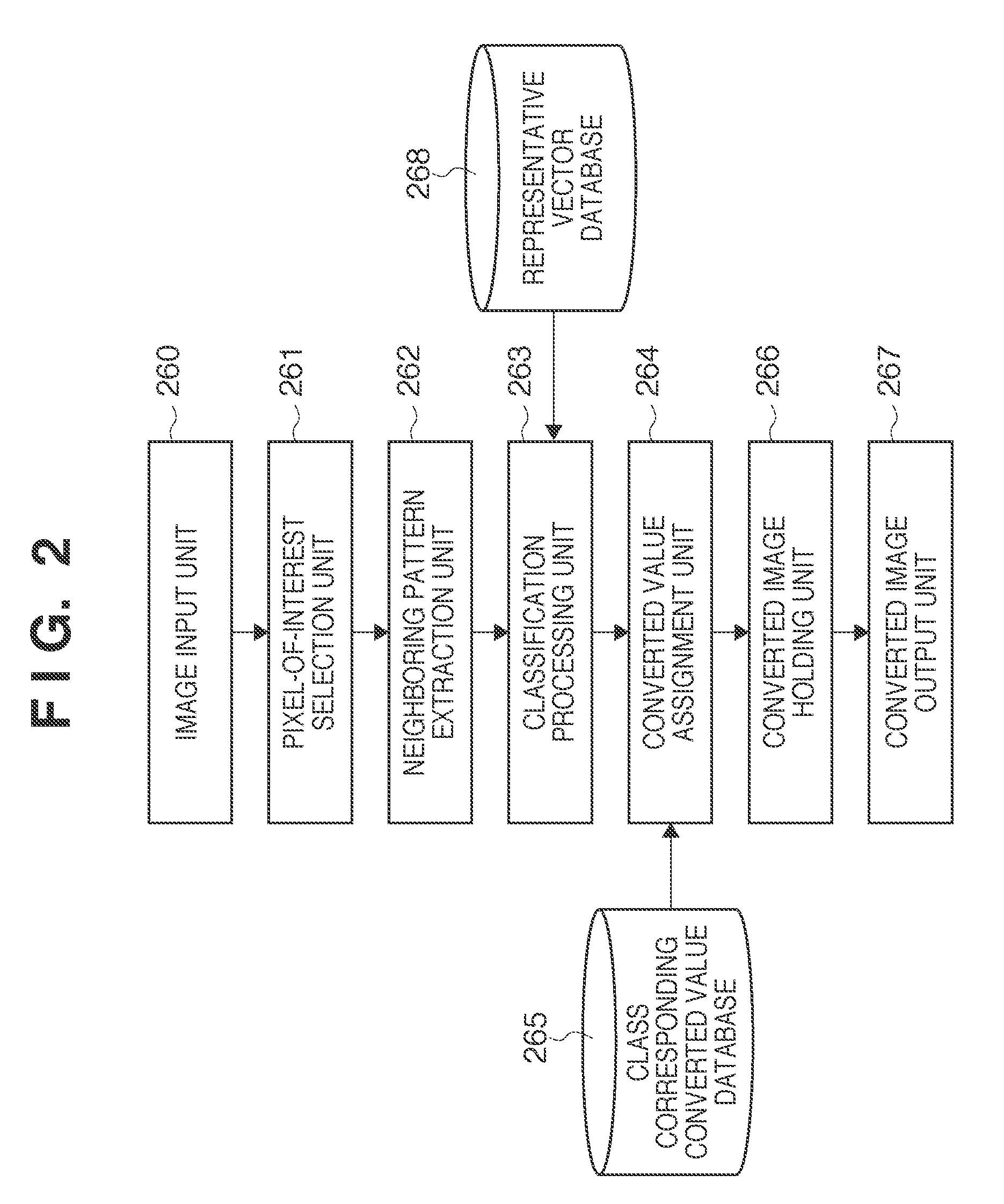Image conversion method and apparatus, and pattern identification method and apparatus
- Summary
- Abstract
- Description
- Claims
- Application Information
AI Technical Summary
Problems solved by technology
Method used
Image
Examples
first embodiment
[0066]An outline of the first embodiment will be described first. In an image conversion method according to this embodiment shown in FIGS. 1 and 4, an image input unit 10 sequentially selects a pixel of interest of an input image (steps 40 and 41). A neighboring pattern extraction unit 12 acquires a neighboring pattern based on the values of peripheral pixels at predetermined positions relative to the position of the selected pixel of interest (step 42). As the peripheral pixels, eight pixels at the periphery of a 3×3 pixel pattern with a pixel of interest at the center as shown in FIGS. 3A to 3C are usable.
[0067]Next, a classification processing unit 13 classifies the neighboring pattern as one of a plurality of classes defined in advance (step 43). In the first embodiment, classification is performed based on the pixel value comparison result between the selected pixel of interest and the peripheral pixels. This will be explained later in detail.
[0068]Based on the mutual relation...
second embodiment
[0110]In the second embodiment, an example will be described in which the method used in the first embodiment to obtain converted values corresponding to classes is modified.
[0111]As the mutual relationship between the plurality of classes, the distance or similarity between representative patterns set for the classes is usable. For example, a numerical value sequence formed from eight {0,1}s based on a value comparison result described above is defined as the representative pattern of each class. The distance or similarity between them can be used. A case in which a numerical value sequence representing a result of value comparison is used will be described below.
[0112]In the first embodiment, numerical values which can preserve the distances between the 3×3 pixel pattern groups serving as the generation sources of the classes as much as possible are used as converted values corresponding to the classes. In the second embodiment, however, instead of performing statistical processin...
third embodiment
[0130]In the third embodiment, an example will be described in which the process contents of the processing units in the first embodiment are modified. An example of a pattern identification method of identifying a converted image as the face image of a specific person will also be described, as in the first embodiment.
[0131]The arrangement of processing units according to this embodiment is the same as in the first embodiment shown in FIG. 1. The processing procedure is also the same as in FIG. 4. However, the process contents of the processing units are slightly different. Parts where the process contents are different from those of the first embodiment will be described with reference to FIGS. 1 and 4, and a description of the remaining parts will not be repeated.
[0132]First, an image input unit 10 inputs a grayscale image corresponding to an extracted human face and including 20×20 pixels, as in the first embodiment (step 40).
[0133]A pixel-of-interest selection unit 11 selects a...
PUM
 Login to View More
Login to View More Abstract
Description
Claims
Application Information
 Login to View More
Login to View More - R&D
- Intellectual Property
- Life Sciences
- Materials
- Tech Scout
- Unparalleled Data Quality
- Higher Quality Content
- 60% Fewer Hallucinations
Browse by: Latest US Patents, China's latest patents, Technical Efficacy Thesaurus, Application Domain, Technology Topic, Popular Technical Reports.
© 2025 PatSnap. All rights reserved.Legal|Privacy policy|Modern Slavery Act Transparency Statement|Sitemap|About US| Contact US: help@patsnap.com



